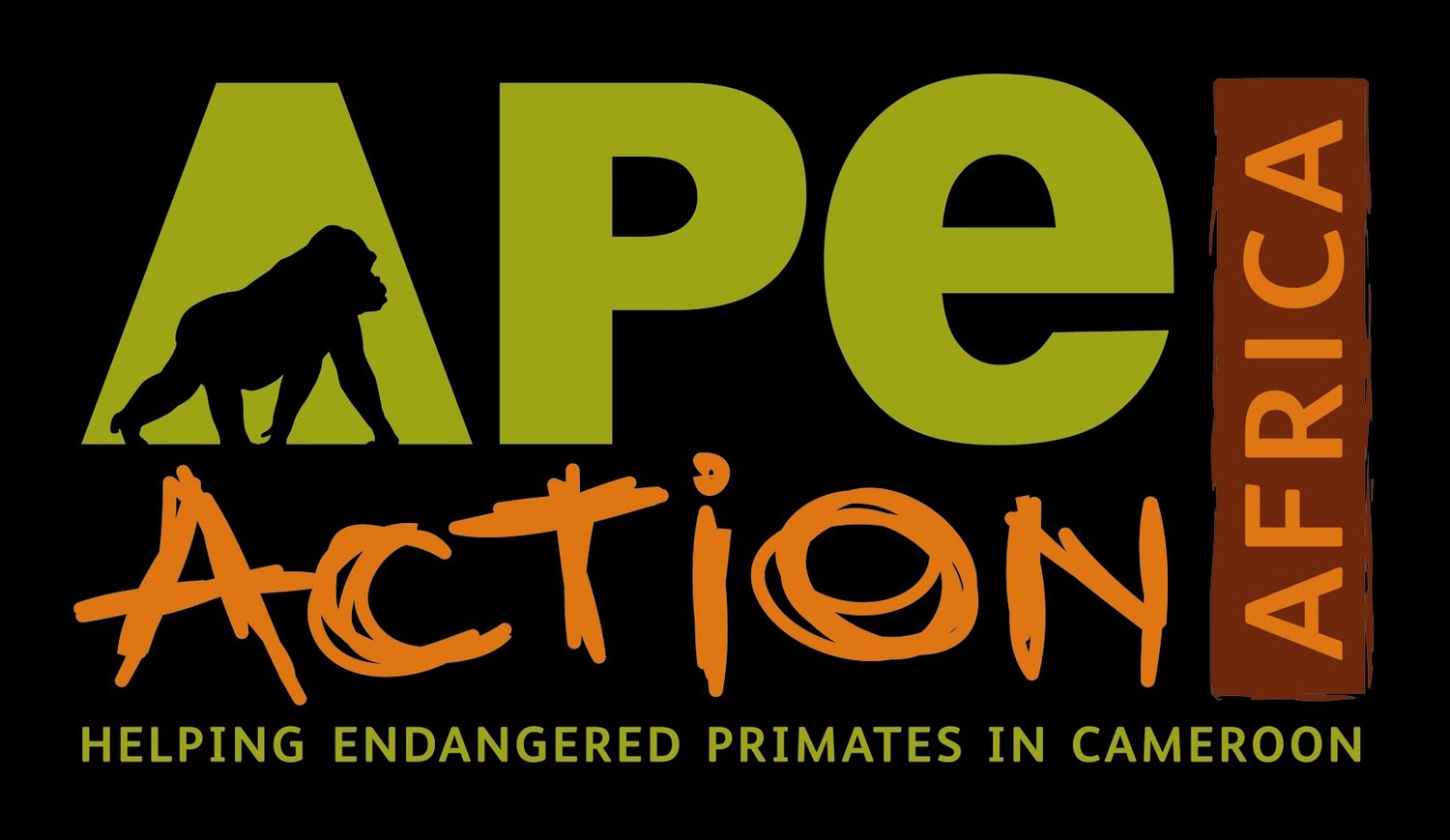Freedom - Returning a gorilla to the wild - part 2
Dr. Julieta Mota and Dr. Matyas Liptovszky perform final vet checks on Freedom before starting his journey to the return site. Image © Passion Pictures
After a wild adult male gorilla appeared in the forest of Ape Action Africa’s Mefou Park, the team faced unprecedented challenges. Keeping an adult gorilla like Freedom, who is not habituated to the presence of humans, in a sanctuary environment posed an enormous challenge to the Ape Action Africa team. His unavoidable confinement inevitably caused him to suffer from some stress, and Freedom’s reaction to the appearance of any human was to scream and charge at them. Closing off the entire area around Freedom, access was limited to management and two experienced caregivers, and it is a testament to their skills that they were able to keep him in good condition and that he cleared the health checks required for his return to the wild.
Securing an appropriate site for Freedom’s return took months of effort, due in part to the fact that it was impossible to know his place of origin. Ape Action Africa worked closely with the Ministry of Forestry and Wildlife to select and check several possible sites before a final decision could be made. Having found a suitable area, the team then had to make numerous trips to perform a full evaluation and to work with local authorities and communities to ensure that the return could safely go ahead.
Travelling to evaluate possible return sites. Image © Ape Action Africa / Alex Benitez
As well as the work on securing the site, the logistics of transporting a 135kg adult male gorilla took a huge amount of preparation. A special transport cage had to be built to keep him secure during transit and a path through the dense forest had to be cleared to allow access to the return site. The sanctuary’s UK vet team from Twycross Zoo provided invaluable support, with their CEO of Twycross Zoo, Dr. Sharon Redrobe, OBE, flying out to Cameroon to perform a health check on Freedom and to calculate sedation dosages in preparation for the day of his return. She and Rachel also travelled to the return site with the transport cage filled with 135kg of gravel, ensuring that the boat to be used for part of the journey could safely handle Freedom’s weight.
Dr. Julieta Mota, head of our veterinary department, Dr. Matyas Liptovszki of Twycross Zoo and our Director, Rachel Hogan. Image © Ape Action Africa
Once every detail was organised, Twycross Zoo's Head of Life Sciences, Dr. Matyas Liptovszky, our UK vet advisor, travelled to Cameroon to join the return team and Freedom’s journey back to the wild could finally begin. It would take a gruelling 11-hour drive to transport the gorilla to the chosen return site, a journey that was to be taken overnight when roads are quieter and disturbance to Freedom would be reduced.
Read about the day of Freedom's return to the wild in part 3 of his story.
To celebrate Freedom's return to the wild and support our vital primate conservation work, please consider donating. Every contribution really does make a difference.
If you missed part 1 of our story, catch up on how Freedom arrived at the sanctuary here.




